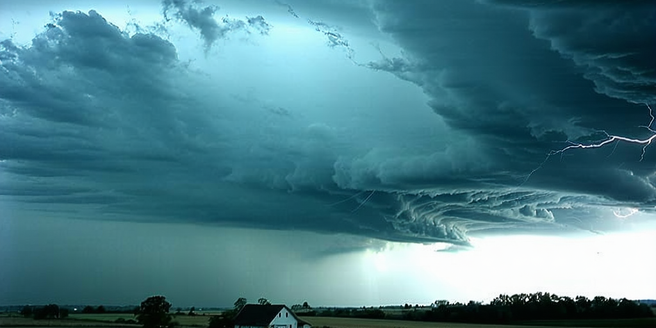
Introduction to Weather Anomalies
Weather anomalies encompass unusual meteorological phenomena diverging from the norm. These deviations can significantly impact ecosystems and human activities. Studying these anomalies is crucial for understanding climate dynamics and preparing for their impacts. Meteorologists analyze historical weather data to identify patterns and deviations. Anomalies may include unexpected heatwaves, severe storms, or unusual seasonal shifts. Their causes often involve complex interactions among atmospheric components, ocean currents, and human factors such as urbanization or deforestation. Advances in technology have enhanced the ability to predict weather anomalies with greater accuracy. Understanding these anomalies requires interdisciplinary approaches, combining atmospheric science, geography, and environmental studies. Public awareness and preparedness are essential to mitigate potential disasters arising from these anomalies, underscoring the importance of continuous research and education.
Historical Examples of Unusual Weather Patterns
Throughout history, there have been significant weather anomalies that shaped societies. One example is the Little Ice Age during the 14th to 19th centuries, a period of prolonged cold impacting agriculture in Europe. The Dust Bowl of the 1930s exemplifies how drought and poor land management led to severe dust storms, devastating American farmlands. These historical weather events underscore the importance of sustainable practices in mitigating the impact of climate anomalies. Historical accounts of such events help us understand the conditions leading to anomalies and their profound effects on livelihoods. By analyzing past patterns, researchers can identify potential triggers and implement strategies to prevent future occurrences. This historical context provides a valuable lens through which current and future anomalies can be studied, enhancing our readiness and response strategies.
Scientific Methods for Studying Weather Anomalies
Scientists employ various methodologies to study weather anomalies. Advanced meteorological models simulate atmospheric conditions, predicting potential anomalies. Satellite observations allow for real-time monitoring of weather systems and data collection on global scales. Interestingly, recent breakthroughs in machine learning are also being integrated to improve prediction accuracy. Paleoclimatology, the study of past climates through ice cores and tree rings, provides insights into long-term climate patterns and anomalies. Integration of these techniques informs our understanding of anomaly causation and prediction. These scientific methods enable a proactive approach, allowing for more accurate prediction and mitigation strategies. As technology advances, scientists continue to refine their models and techniques, enhancing our ability to forecast and respond to these anomalies effectively.
Impact of Climate Change on Weather Anomalies
Climate change has intensified the frequency and severity of weather anomalies, altering global patterns. Rising temperatures contribute to prolonged heatwaves, while changing precipitation cycles can lead to severe droughts or flooding. These changes pose significant challenges to human health and infrastructure. These anomalies disrupt ecosystems, affecting biodiversity and agricultural productivity. Recent studies indicate that these changes will only accelerate without significant intervention. Communities, especially in vulnerable regions, face increased risks from climate change-induced anomalies. The intersection of climate change and weather anomalies necessitates urgent action to mitigate their impacts. Policymakers and scientists must collaborate to develop resilient strategies and reduce greenhouse gas emissions. Understanding the linkage between climate change and anomalies is crucial for effective adaptation and mitigation efforts.
Future Predictions and Research Directions
Research into weather anomalies is increasingly focused on future predictions and adaptation strategies. Scientists are developing more sophisticated models that integrate vast datasets, improving anomaly forecasts. As a result, predictions are becoming more accurate and timely. Interdisciplinary collaboration enhances our understanding of complex interactions driving these anomalies. Future research will likely emphasize local impacts, providing communities with tailored strategies for adaptation. There is also a growing interest in understanding the socio-economic consequences of anomalies, aiming to develop holistic mitigation plans. Continued innovation in technology and science will be instrumental in addressing future challenges related to weather anomalies. This forward-looking approach is vital for ensuring sustainability and resilience in the face of changing climatic conditions.
